Posts: 287 Location: Connecticut
Sat 25 May, 2013 6:45 pm
English Longsword Scabbard Project
Having acquired an Arms and Armor English Longsword recently, I set out to build it a scabbard to call home. I completed a wood core for my Gaddhjalt about 6 years ago, but this is the first attempt at doing any leather work. The project hasn't been without complications, I've run into little problems left and right, mostly due to rushing I think. I carved two poplar slats to fit the blade profile, but I did a poor job of gluing them together, which caused one side of the core to come apart during sanding. I slipped glue into the crack, but I think I must have got a glob of glue on the inside, because after that, the sword no longer fit. I decided to attempt to salvage the core by jamming a chisel through the joint and prying around. I guess that worked, because the sword fits again. The sanding is kind of rough and the core isn't particularly even. I decided that this being a first attempt, I'd just continue on and if it turns out badly I'll chock it up to a learning experience.
Today I set about cutting the leather and sewing it on. I did not use an adhesive inside the leather. I also decided I would just go simple, so I didn't put on any risers and I don't plan to attempt any tooling. I wish I'd have trimmed the leather a bit more, when damp it stretched a bit more than I thought it would. The seam was difficult to get even, probably in part to the fact that the core isn't very even. It wobbles and overlaps. All together, I've learned a good bit from the project, and I'm not devastated with the look thus far, though it could certainly be better. Tomorrow I will probably attempt to dye it. We'll see how that turns out :eek:
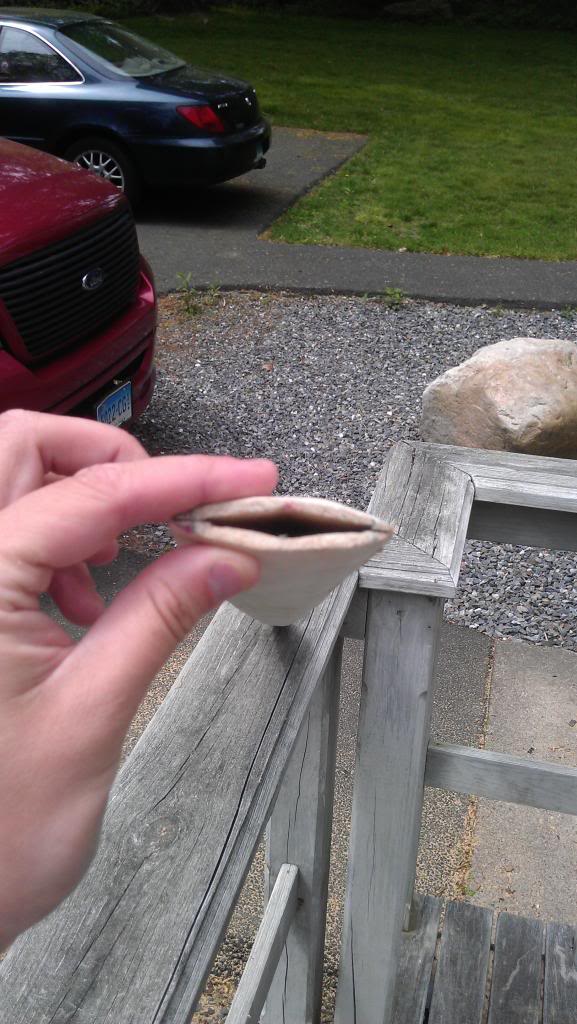
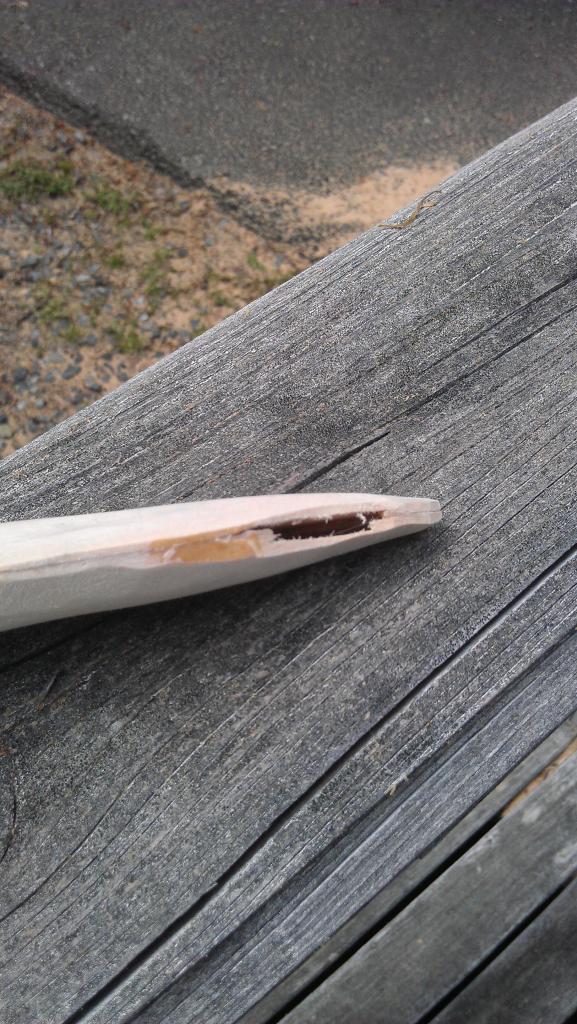
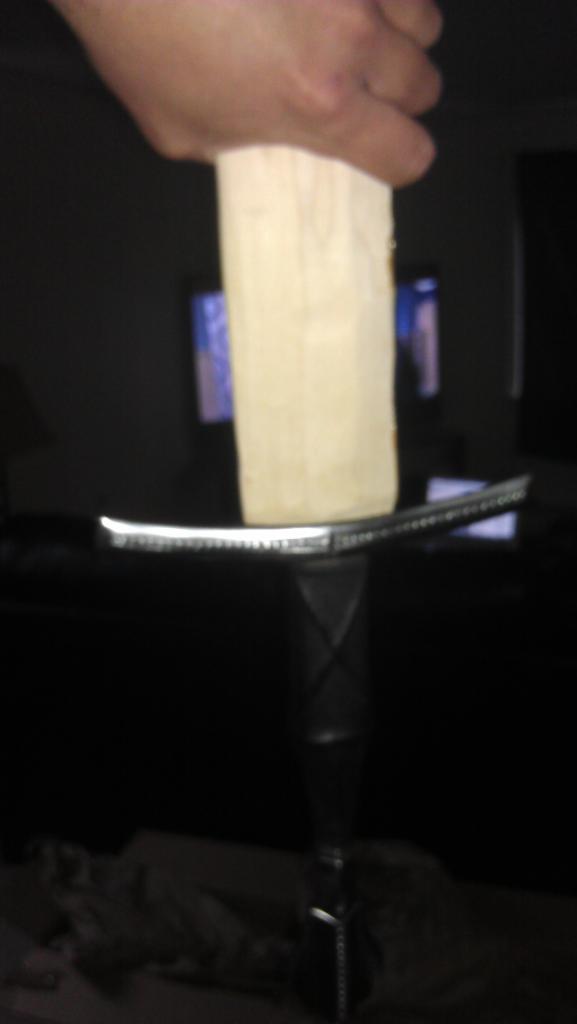

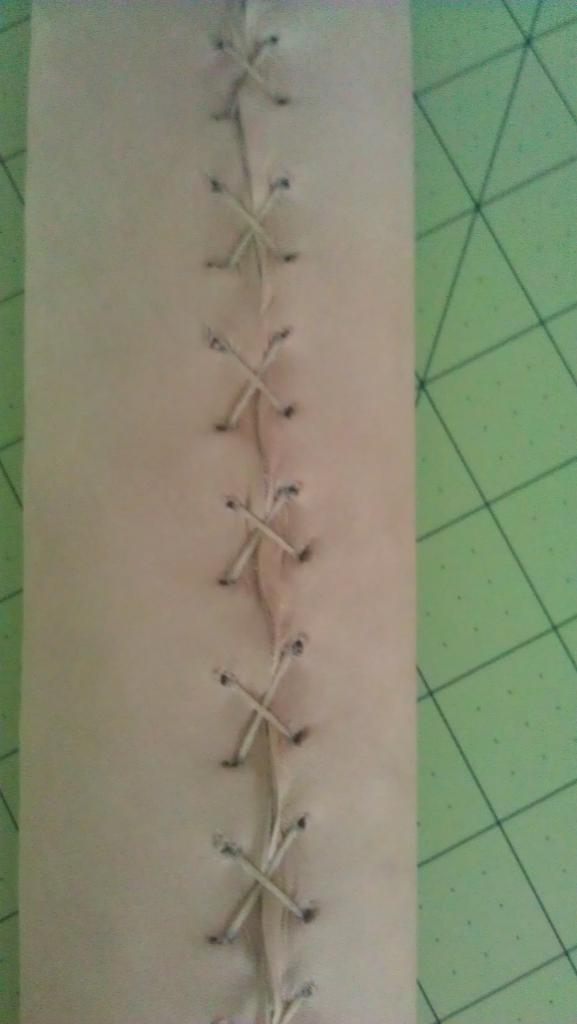
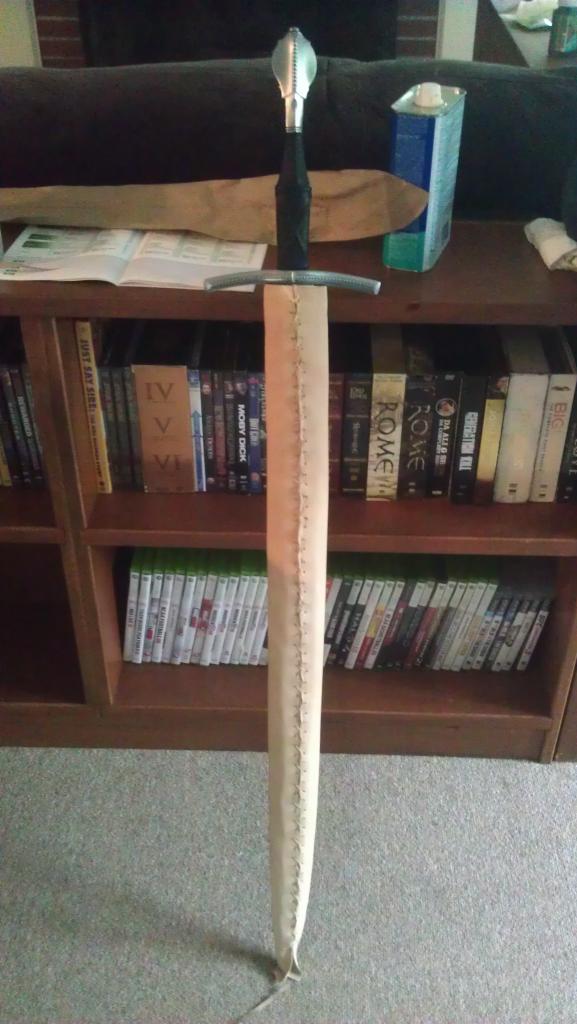






 [img]
[img]
 [/img]
[/img]